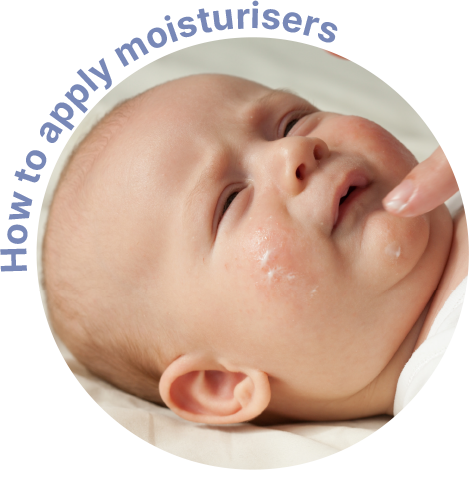OPTIMISING MOISTURISER USE IN CHILDHOOD ECZEMA
Moisturiser application and frequency
Click on the images below for more information.

Advise parents and carers to:
- Apply moisturisers as often as needed to keep the skin well moisturised and in good condition (ideally, at least 3-4 times a day)20
- Regularly apply moisturiser to the hands and face, which are exposed to the elements20
- Apply moisturisers before activities that may irritate the skin (e.g. swimming) and protect babies' hands and cheeks before mealtimes20
- Apply moisturisers after washing hands, or taking a bath or showering; apply after patting skin dry20
- Ensure that moisturisers are available at nursery, pre-school or school.14

| Product | Advise parents and carers: |
|---|---|
| Leave-on products | To apply directly to the skin |
| To gently smooth (not rub) the moisturiser into the skin in the direction of hair growth; this reduces the risk of hair follicles getting blocked | |
| Soap substitutes (for hand-washing, showering or in the bath) | To mix about a teaspoon of moisturiser into the palm of their hand with a small amount of water then spread over damp or dry skin |
| To rinse and pat (do not rub) skin dry | |
| Moisturisers do not foam like soap | |
| To speak to their pharmacist if the skin stings and does not improve after rinsing; the pharmacist can suggest an alternative | |
| With other medicines | To wait at least 30 minutes after applying the emollient before using a steroid or another topical treatment to avoid diluting the latter and reducing spreading to unaffected skin. |

